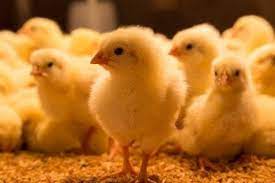
The Nigerian poultry industry, particularly the broiler segment, has witnessed a remarkable surge in recent years. This shift from small-scale, family-run operations to larger, commercial farms reflects the growing demand for broiler meat. Driven by affordability, protein content, and cultural acceptance, broiler production is a cornerstone of the Nigerian poultry sector. However, despite this promising growth, challenges like high feed costs and disease outbreaks continue to threaten profitability.
The broiler industry operates on a delicate balance, with profits heavily influenced by three key factors: feed costs, growth rate, and mortality rate. Even minor fluctuations in these areas can significantly impact your bottom line. This article equips you with a comprehensive toolbox of strategies to supercharge broiler growth, optimize feed efficiency, minimize mortality, and ultimately achieve peak profitability in your Nigerian broiler operation.
Building a Strong Foundation: Choosing Quality Chicks and Feed
Just like any athlete, a broiler chicken’s potential is intrinsically linked to its genetics. Chicks sourced from weak parent stock or a low-quality hatchery might struggle to perform well, regardless of your rearing practices. To achieve optimal results, select your chick supplier meticulously. Look for reputable hatcheries known for their high-quality birds and proven track record. Chicks from such hatcheries will possess the genetic predisposition for exceptional growth and efficient feed conversion, translating to easier rearing and increased profitability.
Nutrition is Paramount: A Balanced Diet for Optimal Growth

Broilers require specialized diets formulated specifically for their distinct growth stages. Most feed suppliers offer starter, grower, and finisher feeds tailored to each developmental phase. The quality and composition of their diet directly impact their growth rate, feed utilization, and overall health.
A well-balanced diet is the cornerstone of broiler success. It should be meticulously formulated to consider the birds’ age, breed, and weight, ensuring they receive all the essential nutrients required for healthy growth. Fresh, clean water is equally crucial. Broilers are particular about water quality, so providing constant access to clean water is vital. If you choose to mix your own feed, ensure it incorporates all the necessary components for each stage of their development.
Creating a Fair Playing Field: Separating Broilers by Size
To ensure even growth across your flock, consider separating broilers based on similar size or weight. This approach prevents larger birds from dominating feeders and waterers, allowing smaller ones unimpeded access to the nutrients they need to thrive. By dividing the “big guys” from the “little guys,” you create a more equitable environment for all your broilers, encouraging the smaller ones to consume more feed and water, ultimately converting that extra intake into increased meat production.
Boosting Growth: Exploring Nutritional Supplements
Nutritional supplements known as growth promoters can be strategically incorporated into your broilers’ feed or water to enhance their development. These supplements can improve feed conversion efficiency, meaning your birds utilize feed more effectively, leading to faster growth and improved overall performance.
Specifically formulated for broiler chickens, growth promoters can significantly accelerate their growth rate, with some claiming broiler maturity achieved up to 2.4 times faster. Additionally, these supplements can enhance feed conversion, allowing your birds to derive more meat from the food they consume.
Maintaining Optimal Growth Conditions: Housing, Bedding, and Feeders
For broiler chickens to reach their full potential, their living environment needs to be meticulously managed. This translates to providing them with a high-quality coop that offers ample space, is situated in a safe location, and boasts excellent air circulation. The bedding itself plays a crucial role – it should be clean, dry, and free of harmful ammonia and other gasses that can compromise their health.
Investing in feeders that minimize waste can yield significant long-term cost savings. While budget-friendly feeders might seem like an attractive option upfront, high-quality feeders that minimize spills and wasted feed will prove more cost-effective in the long run.
Disease Prevention: A Proactive Approach
Disease outbreaks pose a significant threat to broiler production and profitability. Implementing a proactive biosecurity program is essential to safeguard your flock. This includes routine vaccination schedules, maintaining proper hygiene in the coop, and practicing good pest control measures. Early detection and intervention are key – regularly monitoring your flock for signs of illness can help prevent outbreaks from escalating and minimizing potential losses.
Conclusion
Optimizing broiler production in the Nigerian market requires a comprehensive approach that addresses all aspects of rearing practices. By focusing on high-quality chicks, a balanced diet, proper housing and hygiene, and proactive disease prevention, you can significantly improve your broiler growth rate, minimize mortality, and ultimately achieve peak profitability. By implementing these strategies, you can transform your broiler operation from surviving to thriving in the dynamic Nigerian poultry industry.

Leave a Reply